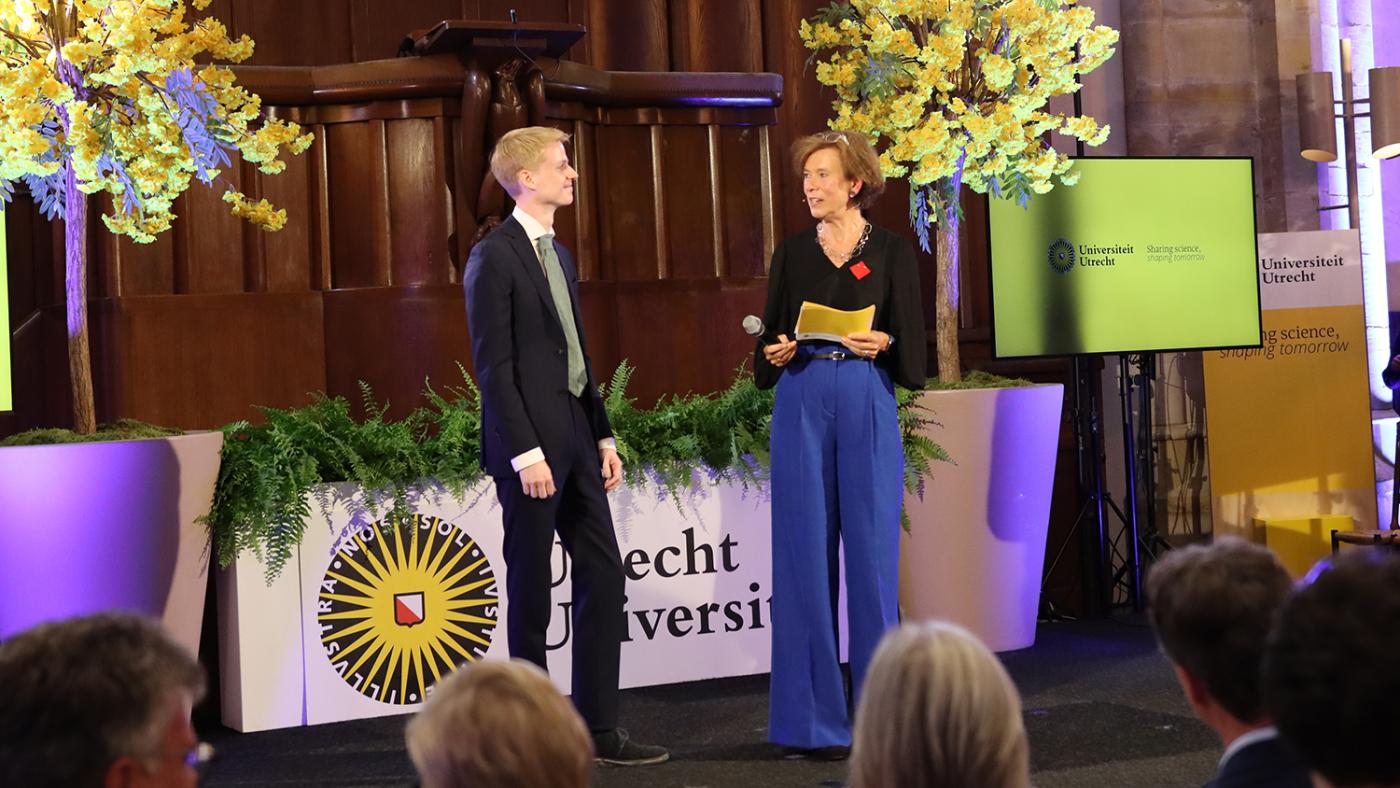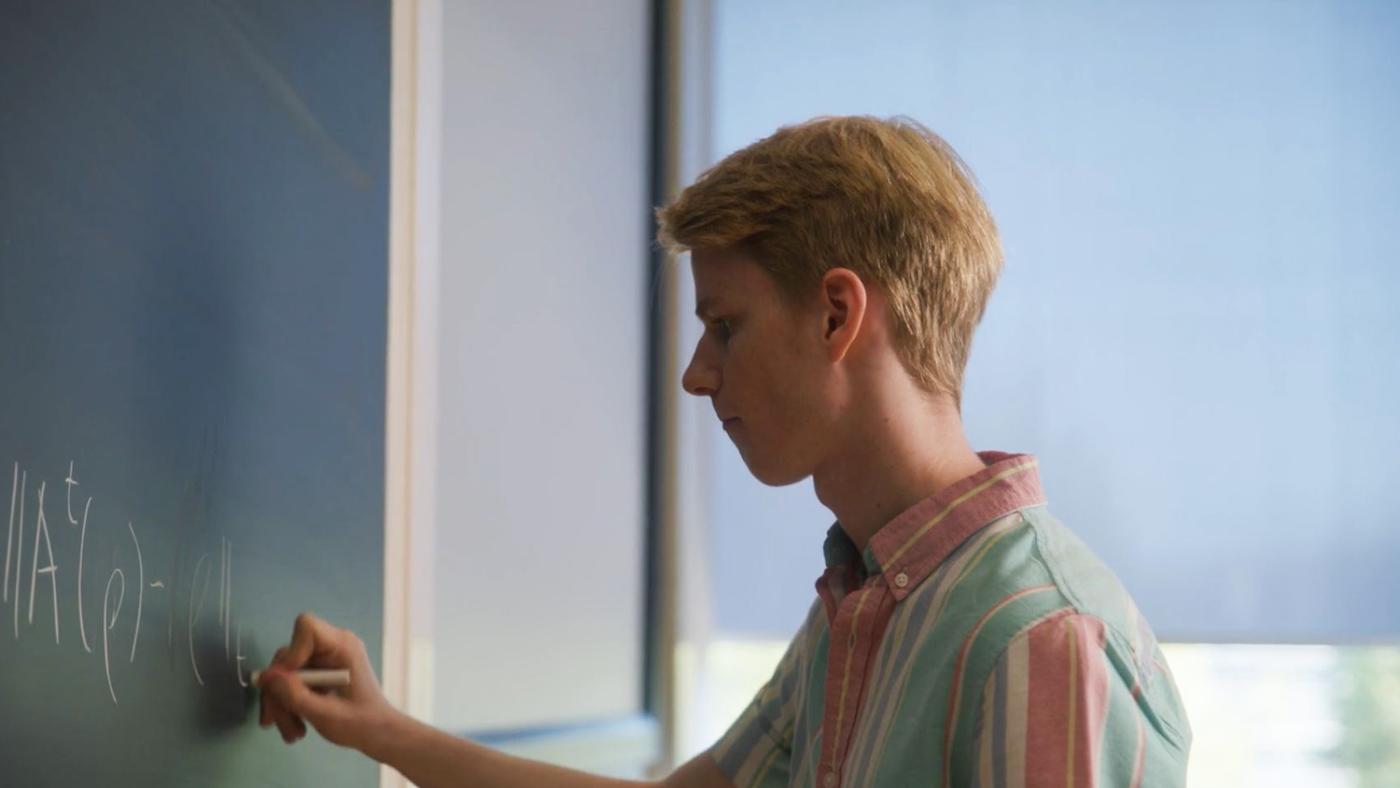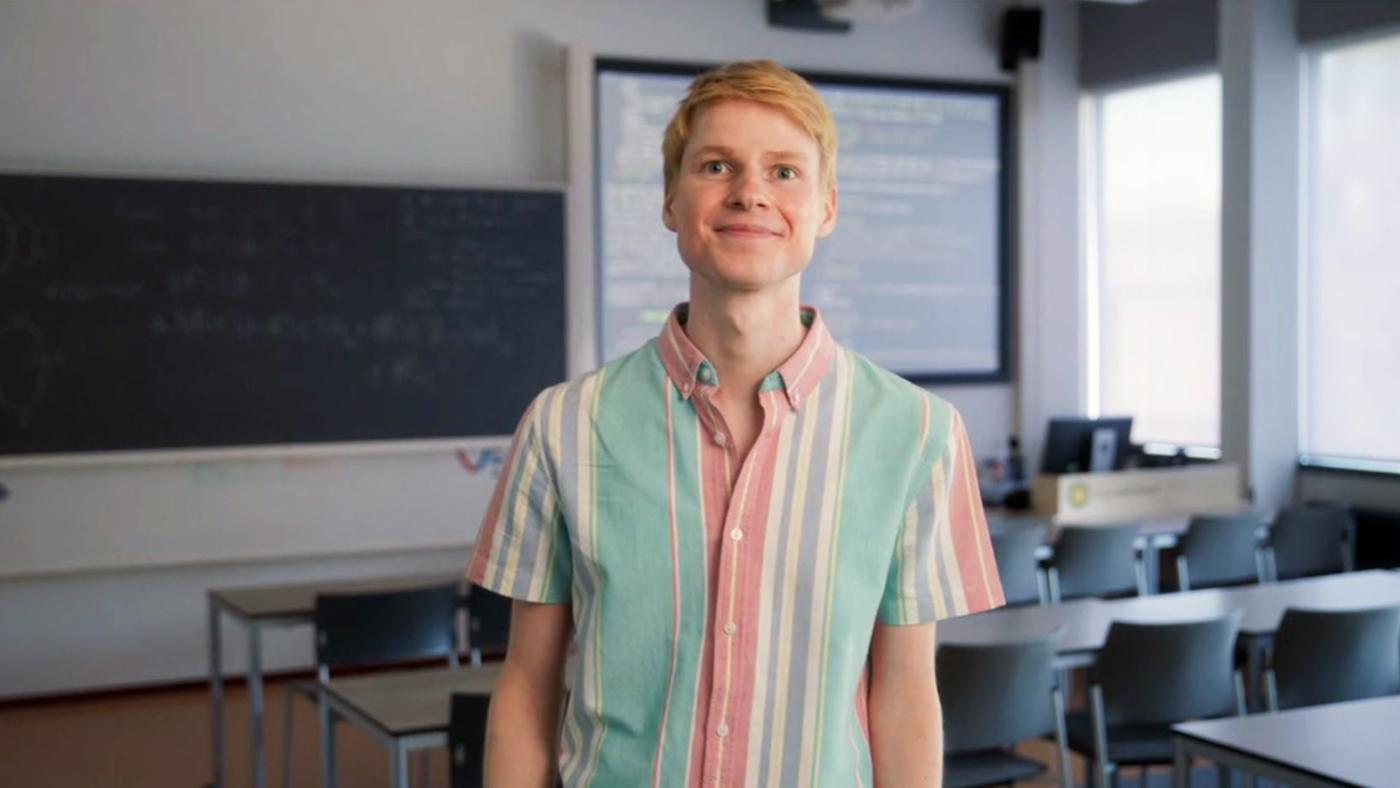‘Genius’ Marien Raat wins Vliegenthart Thesis Award
Time machines may be able to unravel unsolvable problems after all

Marien Raat (26) doesn’t think the term "genius" suits him. “I just had a pretty good time doing my research and happened to stumble upon something interesting,” he says, modestly. Moreover, he doesn't believe his thesis on the limits of what computers can calculate is particularly complicated. “It doesn't have loads of formulas. Anyone who enjoys thinking logically will be able to understand most of it.”
Even so, the Vliegenthart Thesis Award jury describes him as a "genius in his field." The prize is awarded annually as part of the ceremony to kickstart the academic year. Raat was this year's winner thanks to the thesis he wrote to obtain Master's degrees in both Computer Science and History & Philosophy of Science. He demonstrated that mathematician and computer pioneer Alan Turing (1912-1954) was wrong.
Turing demonstrated that a computer's computing power is finite and certain tasks could never be performed. However, Marien discovered that this limit can be pushed further and further with the help of time loops. According to the jury, his thesis offers a “fresh perspective” on a fundamental problem in computer science.
The thesis itself is meticulously designed. The cover features a series of strings of zeros and ones, some of which form several loops – a reference to the time travel loops that can provide computers with additional computing power. In addition, each chapter begins with a suitable quote from a science fiction book or film, often referring to time travel. “When I began to work on my thesis, I started watching as many time travel movies as I could to get an overview of how you can think about this. Some films don't approach it realistically at all, but they help you get a feeling for such a complicated concept.”

Marien Raat receiving his award at the ceremony to open the academic year 2024-2025. Photo: DUB
Time loops are like small time machines. How does that work?
“Time loops occur in the general theory of relativity, according to which space and time are one big thing and objects with a considerable mass can create a curvature in it. The classic way to imagine this is by stretching a cloth and then placing a heavy ball on it. The dent in the cloth symbolizes the curvature of space-time. In very specific circumstances, when you have a large mass rotating strangely, it might be possible that space-time forms a sort of tunnel that returns to itself. The tunnel can end in another place in space, but perhaps also in the past.”
Anything can happen in science fiction, but do your time loops really exist?
“It is currently a theoretical concept, but black holes used to be that way too (laughs). I must say we still have a very poor understanding of the circumstances in which time loops can arise. Time loops are possible for objects that are small and very heavy, and that is where general relativity meets quantum mechanics. These theories contain different assumptions that cannot be true at the same time, but you need both to make time loops somewhat consistent.”
What do you mean by "consistent"?
“Apart from the fact that the theories clash, time loops also come with a more logical-philosophical problem, as they can lead to paradoxes. Take Marty McFly from Back to the Future, for example. When he travels back in time to when his parents fall in love, he almost causes them not to get together, which would mean he would never be born. But if Marty is never born, how can he exist? In the research on time loops, we assume that such inconsistencies cannot exist.”

Marien Raat. Image: screenshot from UU video
If time loops have so many challenges, does it still make sense to use them in your research?
“Yes, because if you start thinking about the consequences of time loops, this can provide insights into how realistic they are. Perhaps they can enable us to solve certain problems we consider unsolvable, making it more likely that they don’t exist. However, by looking at the consequences, you might also be able to detect or find them more quickly, not to mention it is a new way to think about a fundamental and interesting question, namely what computers in this universe can and cannot calculate.”
In your research, you delve specifically into Turing's halting problem. Can you explain what this is?
"Simply put, the halting problem is whether a specific computer programme will ever finish a certain calculation. We know that some problems are solved quickly, such as three times three, while others keep going indefinitely, such as the value of pi. But, for other problems, this is unclear. Take the Collatz Conjecture, for example, where you divide a number by two if it is even, and multiply it by three and add one if it is odd. It seems like you always end up with one, but there is no hard proof.
If you tasked a normal computer with running the programme and stopped when the result for a certain number was not one, you could solve it. But, at the beginning of the twentieth century, Alan Turing had already found a pretty elegant proof that this is logically impossible, as a general rule."
But it is possible with a time loop?
"Yes. Eight years ago, a group of mathematicians came up with a clever trick to get the answer to the halting problem without going through the entire programme. They used the computer's output as input in the past through the time loop. This input must remain the same, otherwise the world would no longer be consistent. By doing this, they created a situation that would only make sense if the correct answer came out of the computer. When I came across this paper, I had a strong intuition that we could solve even more problems by adding more of these loops. In my thesis, I explain that this is possible.”
The jury praised you for contacting the authors. Why did you do that?
“In their paper, they wrote that we can't use more than one time loop. I delved into their evidence, but I still couldn't figure out why. This got me stuck for months. I tried to understand what I misunderstood, but when I contacted them and asked for an explanation, we ended up discovering a mistake in the evidence. We then worked on the problem together and ultimately solved it. It was a pretty nice interaction: they were very friendly and even mentioned me as a co-author in their new paper.”
Do you hope to continue this research in the future, or do you have other ambitions?
“My thesis topic is pretty much finished now. I recently started a PhD in Leiden on game theory and quantum computers. I am going to investigate how to simulate game theory with quantum particles and how to gamify knowledge about this subject, so you can explain it to people more easily.”

Marien Raat
Was on the board of...
SUUS, the study association of the Master's in History & Philosophy of Science. “I saw my friends and classmates a lot while writing my thesis, which turned the entire affair into a social activity. We often brainstormed about topics together as we walked through the botanical gardens."
In his spare time, he enjoys...
Bouldering.
After his thesis, he...
Found a job as a programmer. He took a long vacation to the US after scoring a PhD position.
His science fiction recommendation:
The short story "Story of Your Life," by Ted Chiang, on which the film Arrival is based. “It is about time and language and makes a very fun use of Physics concepts to shape the story.”